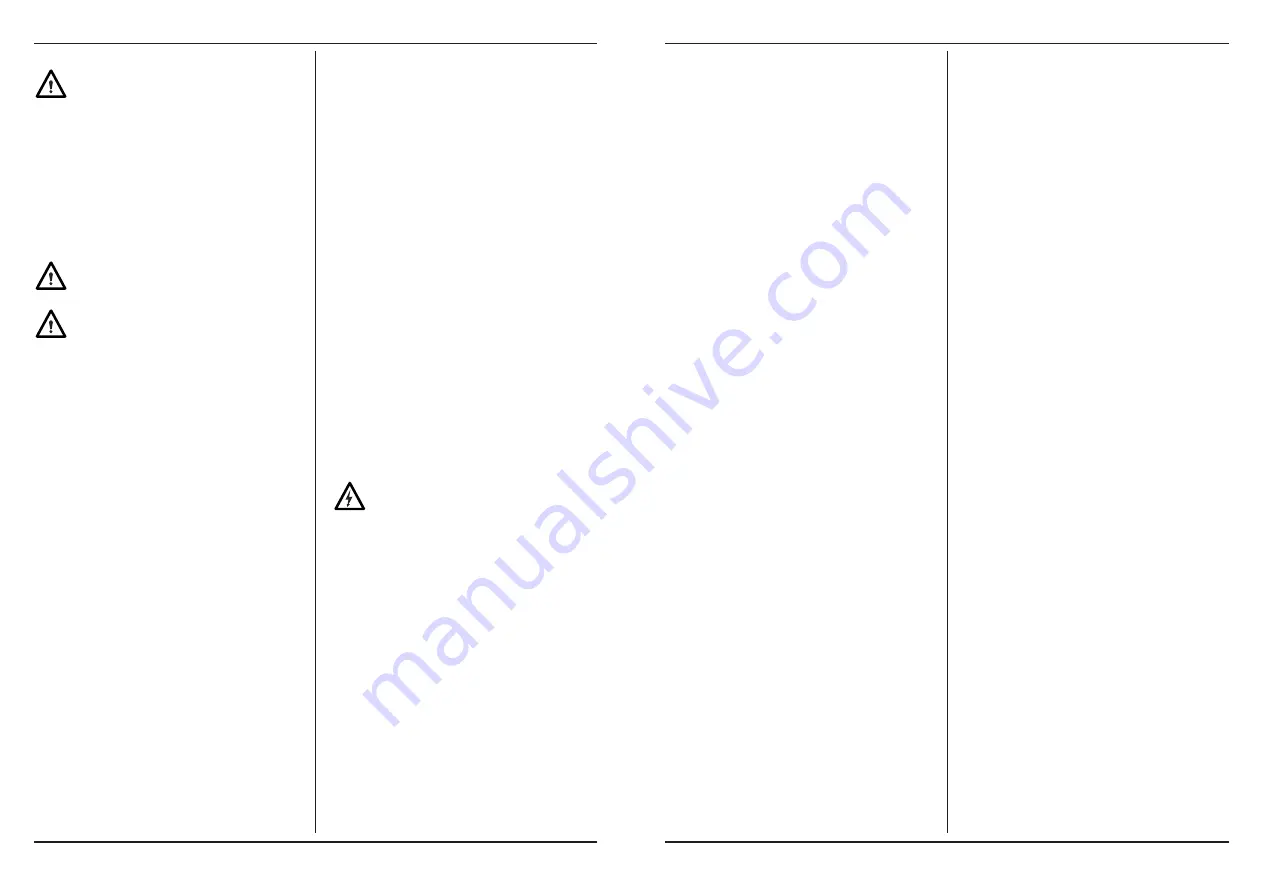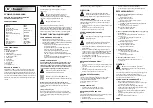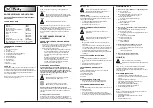
4
Ferm
Ferm
53
OPERATING
Hammer drills require very little operator pressure.
Excessive pressure on the tool can lead to
unnecessary overheating of the motor,and burning of the
driven tool.
AUXILIARY HANDGRIP
The auxiliary handgrip can be rotated 360º around the
drill head,enabling safe and comfortable operation,for
both left and right-handed users.
•
Loosen the handgrip by turning it anticlockwise.
•
Rotate the handgrip to the desire position.
•
Retighten the handgrip in the new position.
EXCHANGING AND REMOVING DRILL BITS
Fig.A & B
Before exchanging bits,first remove the power plug
from the wall socket.
Inspect bits regularly during use.Blunt bits should
be re-sharpened or replaced.
•
Lightly oil the bit shaft before inserting it into the
chuck.
•
Slide the locking sleeve (11,Fig.A) to the rear,and
insert the bit into the chuck opening.Ensure that the
keyway in the bit is seated properly in the chuck,by
carefully turning the bit until it clicks into place.
Release the locking sleeve.
•
To remove the bit,slide and hold the locking sleeve to
the rear.
SETTING DEPTH GAUGE
Fig.A
•
Loosen the handgrip by turning it anticlockwise.
•
Insert the depth gauge ruler through the hole in the
auxiliary handgrip.
•
Slide the ruler to the desired depth.
•
Retighten the handgrip in the new position.
FUNCTION SELECTION SWITCH
Fig.C
The correct position of the selection switch for each
machine function is given in the diagram (Fig.C) on page
2.
1 = Demolition hammer/chisel
2 = Rotary hammer drill
3 = Drilling
SWITCHING ON/OFF
•
To start the drill,squeeze the trigger.
•
To stop the drill,release the trigger.
INSTALLING DUST CATCHER
Fig.D
The dust catcher prevents large amounts of drilling dust
entering the machine when drilling into ceilings.
•
Remove the drill bit.
•
Slide the dust catcher over the shaft of the drill bit.
•
Place the drill bit with catcher in the drill chuck.
•
Always replace a damaged dust catcher immediately.
TROUBLESHOOTING
1. When switched on,the motor does not turn.
•
Failure in power supply.
Check the power supply.
•
Poor contact in the on/off trigger.
Repair or replace the trigger assembly.
•
Mains voltage too low.
Extension lead too long,or too light.
•
Damaged motor.
Have your machine repaired by an expert.
•
Carbon brushes worn.
Replace the carbon brushes
2. Motor generates excessive noise,and runs too
slowly or not at all
•
Motor is overloaded due to excessive pressure or
drilling depth.
Reduce the pressure or drilling depth,reduce power.
•
Damaged motor.
Have your machine repaired by an expert.
•
Supply voltage too low.
Adjust the supply voltage.
•
Carbon brushes worn.
Replace the carbon brushes
3. Overheating in the transmission case
•
Overloading of machine,or blunt drill bit
Reduce the loading,or hone the drill bit.
•
Reduced voltage.
Adjust the supply voltage.
4. Heavy sparking from the motor
•
Inspect the carbon brushes for wear.
MAINTENANCE
Take care that the machine is not connected to
power whenever maintenance work on the
mechanical parts is taking place.
Ferm machines are designed to function problem-free
for a long period with a minimum of maintenance.
Through regular cleaning and correct treatment,you
help assure a long working life for your machine.
REPLACING CARBON BRUSHES
•
Replace both carbon brushes at the same time.
•
Regularly check the carbon brushes for wear and
defects.
•
Always replace worn-out carbon brushes.
•
Always keep the carbon brushes clean,and make sure
that neither brush is obstructed.
•
Open the machine to inspect/replace the carbon
brushes.
•
Remove and replace the carbon brushes if necessary.
•
Reassemble the rear handgrip.
DEFECTS
The machine should be regularly inspected for the
following possible defects,and repaired if necessary.
•
Damage to power cord
•
Broken on/off trigger assembly.
•
Short circuiting.
•
Damaged moving parts.





































